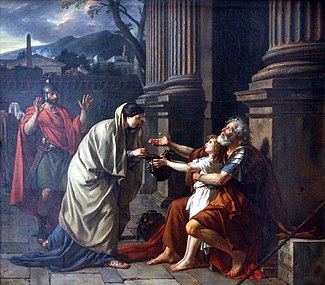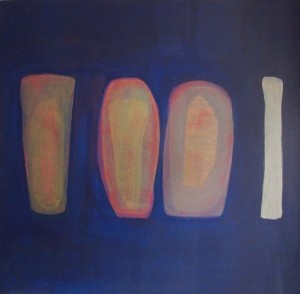This enhanced podcast, part of the series on meaning from the summer retreat, provides a short introduction to archetypes of just 6 minutes.
Monthly Archives: November 2013
Altruism

I used the search function on this site to look up any Middle Way treatment of ‘altruism’ but, as nothing showed up, I decided to post my thoughts and questions for all to see, and to invite comments.
I recently posted comments on the Secular Buddhists UK (SBUK) site in response to a debate on “Buddha losing his religion”. At some point the discussion turned to Buddha rupas, and a contributor wrote that he had carved a seated Buddha figure out of a dead tree-stump in a public park. This carved figure was the object of further treatment by a person or persons unseen: spray paint, tar and amputation of the figures head and limbs occurred.
I need to add at this point that, lest I distort the content of the discussion, readers may wish to get its full flavour by reading it for themselves. But I’ll try to set out the main points here, as I understand them, to advance the questions I have about altruism.
The creator of the Buddha-in-the-park is a secular Buddhist, loves carving, and is good at it. In reporting the fate of his artistic endeavour, his posting expressed some pain and disappointment (my interpretation of his words) rather than anger.
Some discussion on what had befallen his carving ensued, in which the word vandalism was used, and I was affected by the way motives of possible malicious intent, or ‘mindless’ impulses to personal gratification might be (or possibly were being) attributed to the person or persons involved in ‘modifying’ the Buddha from its creator’s intended form. My position in the debate was that, as we had no direct knowledge of the person(s) involved in the secondary acts on the Buddha, we could not be certain as to her/his/their motive(s), and could only speculate.
It’s important to note that the Buddha-carver himself didn’t contribute to the discussion of motives after his first reporting of the incident.
As the discussion continued, consensus about the likely malicious (or ‘mindless’) motivation of the second person to work on the carving softened, so we agreed (more or less) that we didn’t know. However, one protagonist suggested, wasn’t it at least in order to feel saddened and solicitous (my words) for the original creator’s feelings, because he had wanted to bring beauty and happiness into the lives of others who visited the park, and saw his work?
Now I understand this as an inference of altruism. Without knowing directly what the artist’s motive(s) might have been in taking his blade to the tree-stump, it is inferred that he did so – either primarily or secondarily – from an intent to bring beauty and happiness into the lives of others; persons whom it is unlikely he would know personally (unless he directed them to his work, or waited by his work to get to know them as they encountered it). I think you probably get my meaning here.
My suggestion is that the motives of him who created the Buddha-in-the-park are as inscrutable and as closed to us as the motives of the one(s) who subsequently altered its appearance with spray-paint, tar and a Stanley knife or axe. The artist may, like the one who followed him, have got busy on the stump because he could, and wanted to. On an impulse. For personal pleasure (or personal gratification, which sounds slightly more unpleasant but means much the same, I think).
So there it is. What does the Middle Way have to say about any altruism in this suburban saga? How can I know how far my own acts intend kindness to or benefit for others, and how much they are influenced by my own wish for pleasure, fulfillment, or other benefit for myself? And how much – if anything – does it matter?
The picture above is taken directly from the Wikipedia page on Altruism; I’m not aware of any constraints on my using it in this way. If there are, and I’m made aware of them, I’ll comply with them.
There was not much take up for the first online discussion group on Sunday 17th. Please could I have some feedback? Do you want online discussion groups, but it was at the wrong time? Or is it not a good idea?
(If you’re on the home page, click this post on the sidebar menu to get to the page with the comment function).
Robert
Die Brucke…. continued.
In response to Robert’s reply, I have read more about the work of the Die Brucke group of artists. I’m not sure in which way their work brings to us to integration, perhaps the new symbols, violent images, in their work, send a prophetic warning of the horrors to come in two world wars. The new symbols created became a language of violence. Nolde was a visionary, he felt the inter -dependence of art and nature, his stormy sea paintings were filled with energy,
E L Kirchner, 1880-1938, wrote that the group aimed ‘ to eschew the prevalent traditional academic style…..’ He used old techniques like wood cuts in a dynamic way, while always remembering the old Masters like Durer, Cranach and Grunewald and the art of Africa and Oceanic art, which were becoming more widely known in Europe. Kirchner was deeply affected by the first World War, though too sickly to fight, he did driving work, when a new war loomed in 1938 he shot himself, he feared war so intensely. The Nazis confiscated his work. He understood the dark side of life and yet he inhabited the intensity of colour he used in paintings, the reds, yellows and blues, primary colours, and light, as did Van Gogh.
I can see how depression comes about by having an ‘isloated, unintegrated left hemishphere’, I facetiously equated unintegrated with unhinged! Munch had a childhood which seemed to be filled with dying relatives,it must have impacted on his thinking.
Art as a preventative practice against mental breakdown makes sense to me, I also think that the work which art therapists do with prisoners, also shows how people can channel their destructive, anti -social behaviour into positive behaviour, so diverting energy in a more beneficial way.
Herbert Read in his book ‘The Meaning of Art’ writes, ‘expressionism is a distinct movement in modern art, it arose spontaneously as a manifestation of artists and a group of artists in Germany ,in the decade before the first world war, was it a sign of the times? In France, the Fauves were not as violent in expression, but the need for change also existed.
I listened to Robert Plinsky reciting Donne’s Nocturnal on St lucie’s Day, beautiful sombre and emotionally charged. I can see how an isolated left hemisphere has a detrimental effect, art to avoid mental breakdown seems right to me.
I’m aware of the vast difference between depression and melancholy, having experienced both. With help, depression became a thing of the past some decades ago , but when one of my twin sons died in a paragliding accident in 2000, I knew melancholy all too well.  Without being barely conscious of what I was doing, I painted about twenty canvases over the following few months, geometric patterns, using mostly staight lines, concentrating on the mixing of colours, to fill the shapes, totally absorbed me. I also was reminding myself of Impermanence and the Four Truths, I painted a canvas with four coffin-shaped images, when I finished it I realised that the painting was an expression of my grief.
Without being barely conscious of what I was doing, I painted about twenty canvases over the following few months, geometric patterns, using mostly staight lines, concentrating on the mixing of colours, to fill the shapes, totally absorbed me. I also was reminding myself of Impermanence and the Four Truths, I painted a canvas with four coffin-shaped images, when I finished it I realised that the painting was an expression of my grief.
I then went on to paint more abstract images. The ferocity of pain became integrated, I found myself in a calmer place. Writing, visual art and music all have a similar role I think.
Focusing and Thinking at the Edge
I’ve recently come across a new kind of practice that seems to be a practical application of the embodied meaning thesis. This is the work of Eugene Gendlin and the Focusing institute, which you can find out more about at www.focusing.org. There at two kinds of practices: ‘focusing’, which involves awareness of embodied meaning, and ‘thinking at the edge’, which builds on focusing to provide a method to stimulate creative thinking. I need to investigate this more closely myself, but it seems potentially both useful and exciting, so I thought I would share it even at this stage. The following videos provide a very interesting introduction to the thinking at the edge practice. It’s worth persevering onto the third section, where Gendlin says some inspiring things about our capacity for creative thinking as well giving an outline of his method.
